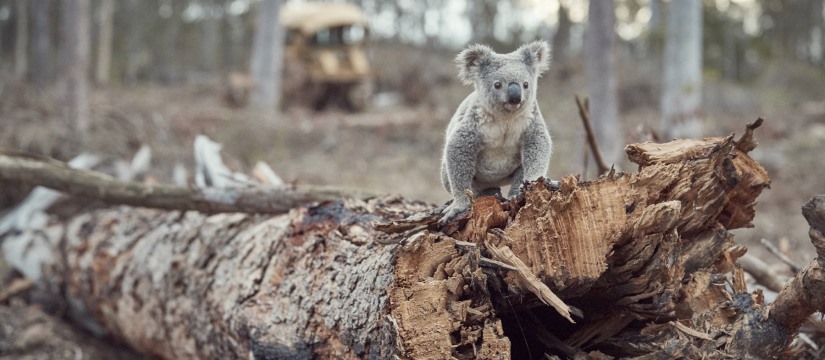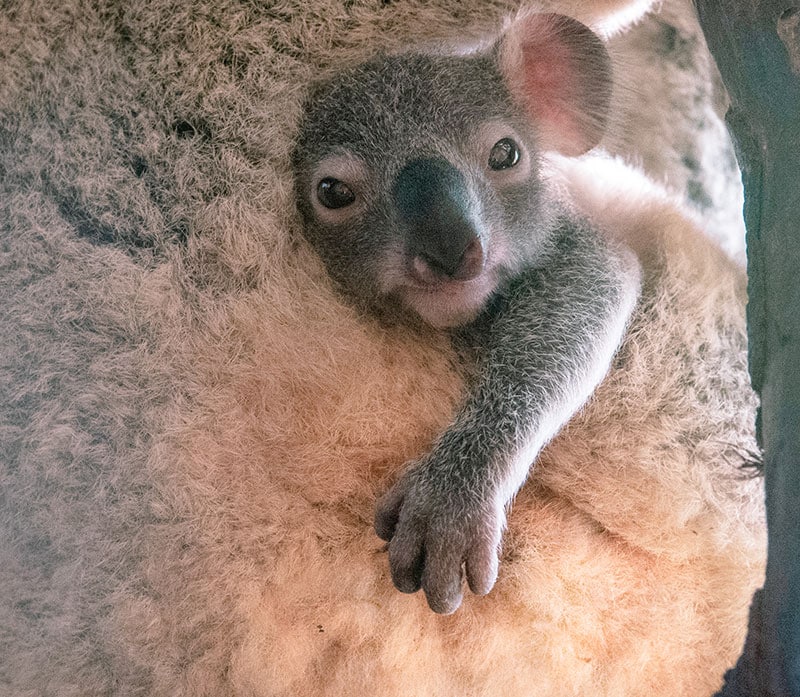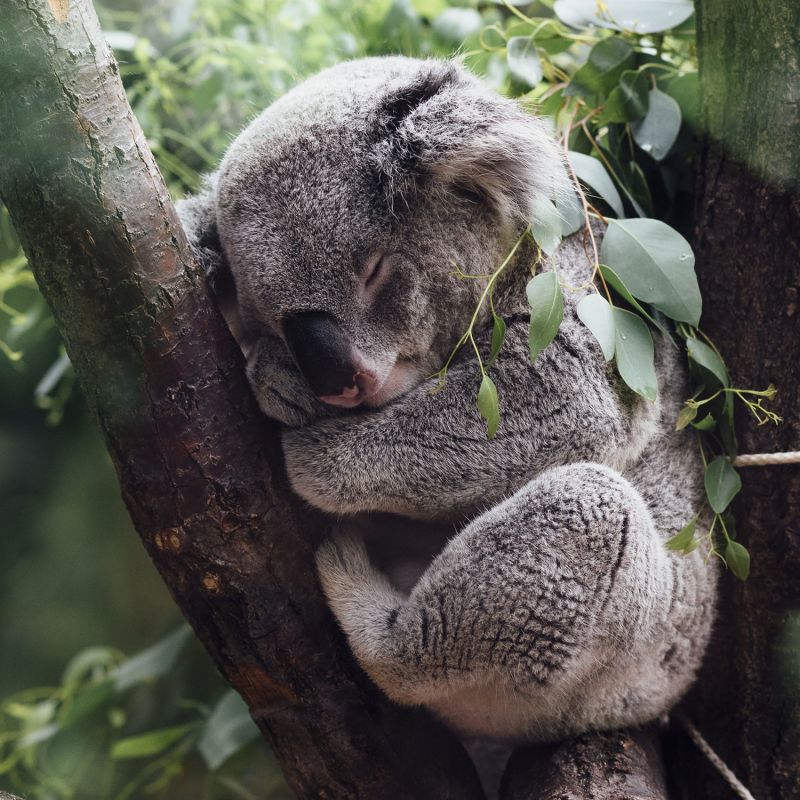Koala extinction in NSW: the facts and directions for action - Community Forum at Warriewood

Facts about why koalas in NSW could be extinct by 2050 and how we can prevent it happening will be the focus of a community forum in April.
Northern Beaches Greens convenor Chris Burns said speakers at the event will include Greens MP Cate Faerhmann, who chaired a NSW Upper House inquiry into koalas last year, Ian Darbyshire, CEO of the Foundation for National Parks and Wildlife and local environmentalist John Illingsworth.
The forum will take place in the Banksia Room, at the Nelson Heather Centre, Warriewood, on Thursday April 8, from 7pm to 9pm.
"The Inquiry I chaired found that koalas will become extinct before 2050 unless the government takes urgent action to stop the biggest threat facing them - the ongoing loss of their habitat,” Ms Faerhmann said.
“Yet we continue to see the clearing of koala habitat across NSW. The situation is urgent.
“This evening is for everyone in the community who wants to make a difference and help save this iconic animal.
“Koalas are perhaps the most loved animal in the world, so if we can’t save koalas, what can we save?”
Mr Darbyshire, whose group raises funds for projects that protect threatened wildlife and habitats - including creating and growing national parks – said he will speak about what volunteers can do to help koalas survive.
“As a tourism attraction, koalas are worth about $3.96 billion so there’s sound economic reasons to protect them - let alone that they’re valuable members of our eco-system,” he said.
“They’re a symbol of Australia’s unique wilderness and wildlife.”
Mr Illingsworth, who has a degree in Earth Sciences and is known for his many films about Pittwater, also had extensive experience working as a wildlife carer and handler, including with koalas, on the three Skippy television series.
“It was wonderful growing up with koalas in Pittwater,” Mr Illingsworth said.
“Unfortunately, insensitive development coupled with habitat fragmentation saw them locally extinct 30 years ago.
“We cannot continue to accept that losing native plants and animals is an inevitable casualty of development: that’s a false dichotomy.
“We can still have farms and industry, but if we destroy our environment in the process we’ll find no joy in an impoverished world. All we need to do is correctly value our ecological inputs.”
Registrations are essential due to COVID-19 restrictions, so please register for FREE and secure your spot via this Eventbrite link:
Tickets will be checked upon arrival.
Please stay home if you feel unwell or if you have been to a COVID-19 hotspot in the past 14 days.
The formal publication of the State Environmental Planning Policy (Koala Habitat Protection) 2021, which commenced on Wednesday March 17th 2021, announced by the state government on March 8th, means land zoned for farming or forestry will not be subject to the land clearing rules that are designed to protect koala habitat. Critics state the SEPP facilitates logging in these areas.
The statement says; “The Minister for Planning will issue a new section 9.1 direction to ensure that only the Minister, and not councils, will be empowered to rezone land used for primary production to an environmental zone, or to rezone land currently in rural zones 1, 2 and 3 to other rural zones”
 This change will prevent councils from being able to rezone land used for primary production to an environmental zone so that the koalas and other species that live that can continue to exist. The LLS Amendment (Miscellaneous) Bill 2020 had attempted to deal with concerns about the rezoning of primary production land to environmental zone by inserting new provisions for “allowable activity land”. This newly proposed measure is an alternative mechanism that could prevent environmental zones from being used as intended, to protect environmentally sensitive land, including koala habitat.
This change will prevent councils from being able to rezone land used for primary production to an environmental zone so that the koalas and other species that live that can continue to exist. The LLS Amendment (Miscellaneous) Bill 2020 had attempted to deal with concerns about the rezoning of primary production land to environmental zone by inserting new provisions for “allowable activity land”. This newly proposed measure is an alternative mechanism that could prevent environmental zones from being used as intended, to protect environmentally sensitive land, including koala habitat.
“Dual consent provisions for Private Native Forestry in local environmental plans will be removed through Koala SEPP 2021”: This is not directly related to Koala SEPP. The LLS Amendment (Miscellaneous) Bill had also attempted to do this and is now being examined by an Upper House Inquiry, so this facilitates forwarding that through this policy. There is a PNF Review currently on foot, and this change pre-empts the outcomes of that review.
Critics state that the NSW Government is not only rewriting the Koala SEPP, but is using it to also implement a number of proposals from the LLS Amendment (Miscellaneous) Bill, via this revised Koala SEPP and direct changes to land clearing and private native forestry codes, in order to overcome the scrutiny of the Parliament and despite LLS Amendment (Miscellaneous) Bill being the subject of an ongoing Upper House Inquiry.
Those who have examined this SEPP state it is an underhanded means to progress controversial changes by changing policy and codes, while similar proposals are under consideration by a parliamentary inquiry.
''It's the death knell for koalas.'' has been the most heard response.
“The dummy spit by the National Party over the new Koala SEPP was never about farmers. It was always about appeasing the logging industry’s demands to be able to log koala habitat on private land,” Cate Faehrmann aid on March 8th
“The key threat facing koalas is the ongoing loss of their habitat, yet this new SEPP won’t stop this loss.
“The Government is making false promises to the public that it will double koala numbers by 2050, because there is no way it will do this if it doesn’t have the courage to stand up to the logging industry.
“Two thirds of koalas live on private land, yet this Government has weakened land clearing laws so that almost none of it is protected.
“The Government is kidding itself when it states that this new SEPP is a big step forward for koalas. The forestry industry has won out in its quest to continue logging koala habitat on private land.
“Why has the Government only committed to approving Byron and Tweed draft Koala Plans of Management when the Department of Planning has had before it other draft KPoMs for some time - namely Clarence, Coffs Harbour, Greater Taree, Port Macquarie/Hastings and Cooma-Monaro.
“This is also a huge kick in the guts for local councils with a lot of their powers to protect koala habitat taken away from them.
“The public has lost all faith in the Government to do what is necessary to stop the clearing of koala habitat. Given their record to date, the Government cannot be trusted to strengthen the codes for land clearing and logging on private land in a way which genuinely protects koalas,” said Ms Faehrmann.
A report by the Natural Resources Commission commissioned by the government in January 2019 under an agreement between the Liberals and Nationals to review land clearing if applications exceeded 20,000 hectares a year was only released in March 2020. The commission submitted it to the government in July, but released it only after Independent MP Justin Field threatened legal action.
Mr. Field said it was evidence that land management under the NSW Nationals was a catastrophic failure.
The NRC's under Native Vegetation, 'Land management and biodiversity reforms - Final report', found more than 37,000ha were approved to be cleared in the 2018/2019 period, almost 13 times greater than the annual average rate across the decade to 2016-17. Approvals jumped more than 70% after the rules covering land clearing changed at the start of 2019, rising from 25,247hectares in the final quarter of 2018 to 43,553 hectares in the first three months of the new year.
The commission found the extent of the land clearing and what is described as “thinning for pasture expansion” was putting the state’s biodiversity at risk. The government had promised to protect between two and four times as much land as it cleared, but has failed to do that in the majority of the state. The report also highlighted the lack of an effective monitoring and compliance regime to ensure laws were enforced. In a six-month stretch between August 2017 and January 2018 there was 7,100ha of unexplained land clearing. It was 60% of the clearing in that time.
Koala habitat areas outside of Sydney are not the only ones under threat.
Those still living in western Sydney are under threat too - developers are clearing their habitat.
"In the Panel's opinion there are no grounds to justify refusal of the application," the document said.
stipulated that Lendlease take measures to ensure that any wildlife inhabiting the dams or neighbouring surrounds be "treated humanely and relocated" before development activities start.
"A qualified ecologist or wildlife carer is required to be present throughout the de-watering activities to relocate fauna or take fauna into care where appropriate" the approval document stated.
are only undertaken where necessary or beneficial for conservation of the species or as part of an approved offset arrangement [for a state significant development]
Report: Australia’s first national park for koalas projected to generate $1.2 billion in economic output and 9,800+ jobs
February 2, 2021
 A landmark study into Australia’s proposed first large national park dedicated to protecting koalas has projected additional regional economic output of $1.2 billion over the next 15 years and $1.7 billion in biodiversity value.
A landmark study into Australia’s proposed first large national park dedicated to protecting koalas has projected additional regional economic output of $1.2 billion over the next 15 years and $1.7 billion in biodiversity value.
The proposed Great Koala National Park will add 175,000 hectares of native state forests to existing protected areas to establish a 315,000-hectare reserve on the NSW Mid North Coast. The site, which includes two koala metapopulations, would protect an area that is home to around 20 per cent of the NSW koala population habitat.
The research by the University of Newcastle examined the economic impact over the next 15 years estimating expenditure across three stages: park establishment, park management and visitor expenditure.
Professor Roberta Ryan said the research demonstrated clearly that the Great Koala National Park would deliver a significant uplift in jobs and revenue for the Mid-North Coast region.
“Over the next 15 years the Park is projected to generate more than 9,800 extra full-time equivalent jobs across tourism, infrastructure, and science and education, and inject $330 million in additional wages into the region,” Professor Ryan said.
The employment projections estimated the phasing out of approximately 675 direct and related forestry full-time equivalent jobs over a 10-year state forest native logging industry transition period.
“The research found that the loss of jobs in the medium-term in the state forest native logging industry would be more than compensated by the creation of new jobs in the management of the national park and in eco-tourism.”
The research projected that the positive impact on the tourism economy would be significant including accounting for the effects of COVID-19.
“The research estimates conservatively that the Great Koala National Park would boost the tourism sector by an additional 1 million visitors to the region by the end of 15 years who will spend $412 million,” she said.
The University study quantified the biodiversity value of transitioning 175,000 hectares of state forests to national park using the ‘Willingness to Pay’ methodology – a well-established international approach used to assess the community’s willingness to pay to preserve the biodiversity for iconic sites, such as the Great Barrier Reef.
“Given the significant decline in the koala population from drought and bushfire and that we are confronting the reality of their extinction, the environmental value of each individual koala is now significantly higher than previously,” Professor Ryan said.
“The biodiversity value of the koala is estimated to be $530 million for the NSW population and $1.7 billion for all Australians.”
The proposed Great Koala National Park spans five local government areas – Bellingen, Clarence Valley, Coffs Harbour, Kempsey and Nambucca. The project steering group comprised the three funding partners of Bellingen Shire Council, Coffs Harbour City Council and Destination North Coast NSW together with the Great Koala National Park project principal.
The Great Koala National Park economic impact assessment and environmental benefit analysis is available at www.hrf.com.au/gknp.